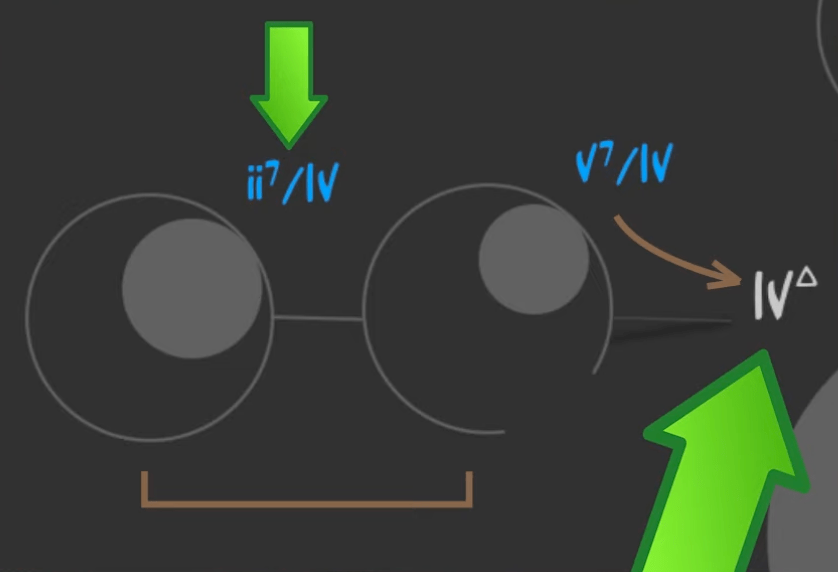If you’re a songwriter or a musician, you may have come across the term “harmony” before. But do you know what it means? Harmony is the simultaneous sounding of two or more notes, creating chords that give a sense of structure and tonality to a piece of music. In jazz, harmony is the best tool that we have for songwriting, yet it’s often neglected by many songwriters and musicians. In this blog post, we’ll explore jazz harmony and how you can use it to play, improvise, arrange or even write music.
To start, let’s take a look at the harmony in the jazz standard “Misty”. The song is in the key of Eb major, and the first chord is an Imaj7 (Ebmaj7). The next chord is a IVmaj7 (Abmaj7), which is a target chord approached by way of its 2-5. This is where the Berklee College of Music’s method of harmonic analysis comes in handy, using arrows and brackets to show the progression harmonically, without any chord symbols.

By studying the harmony of “Misty” from this perspective, we can clearly see that this is a secondary 2-5-1, where the target is not the I of the key. Instead, the ii/IV and the V7/IV are called secondary functions, because they target a primary function. The ii prepares the target by positioning the listener in the subdominant of that target, which then goes to the V in the dominant region which in turn, desperately wants to resolve to the target.

An important aspect of the 2-5-1 is that harmony follows the expected path of resolution towards a target. The ii chord prepares the target by positioning the listener in the subdominant of that target, which then goes to the V in the dominant region which in turn, desperately wants to resolve to the target. Also, the 2-5-1 creates the strongest bass movement of two consecutive perfect fifths.
Using this method of contextual deduction, we can work our way backwards from the target to determine the 2-5-1 progression. For example, in the case of Eb, the ii is Fm7, which would make our progression Gm7 to C7 to Fm7. If the target is the I (Eb), we would have Fm7 Bb7 to Eb, a primary 2-5-1.

Throughout “Misty”, we can see several 2-5-1 progressions using this method of analysis. It’s essential to consider the target when dealing with harmony, and always work backwards from there.
The 2-5-1 progression is crucial to understanding and playing jazz. It creates tension and release, and adds a sense of movement and resolution to a piece of music. By studying the harmony of great jazz standards like “Misty”, you can learn a bunch of new concepts that you can apply to your own process.
In conclusion, harmony is the best tool that we have for songwriting, and it’s important to study and understand it to become a better musician. By using the Berklee method of harmonic analysis, we can learn how to look at the progression harmonically, and study the different techniques used in jazz music. Whether you’re playing, improvising, arranging, or writing music, understanding jazz harmony can help you take your music to the next level.
If you want a workbook with harmony worksheets containing more than 1300 Jazz Standards to study and work on, check out The Ultimate Jazz Harmony Workbooks Bundle by mDecks Music

And if you want all Jazz Standards fully analyzed (with chord symbols, chord-scales, and arrows & brackets) check out The Jazz Standards Progressions Book by mDecks Music

If you want to learn more about the harmony in ‘Misty’ you can check out part 2: Learning Jazz Harmony the Berklee Way: Deconstructing ‘Misty’ – Part 2


Leave a comment